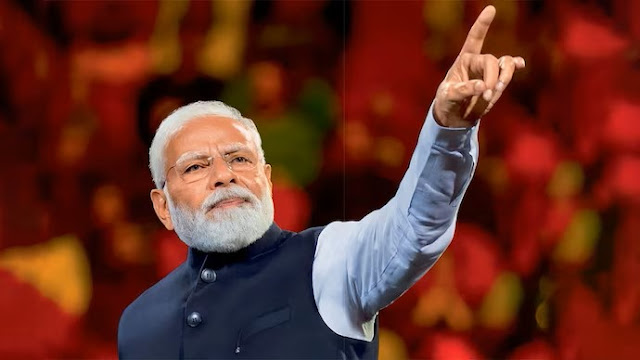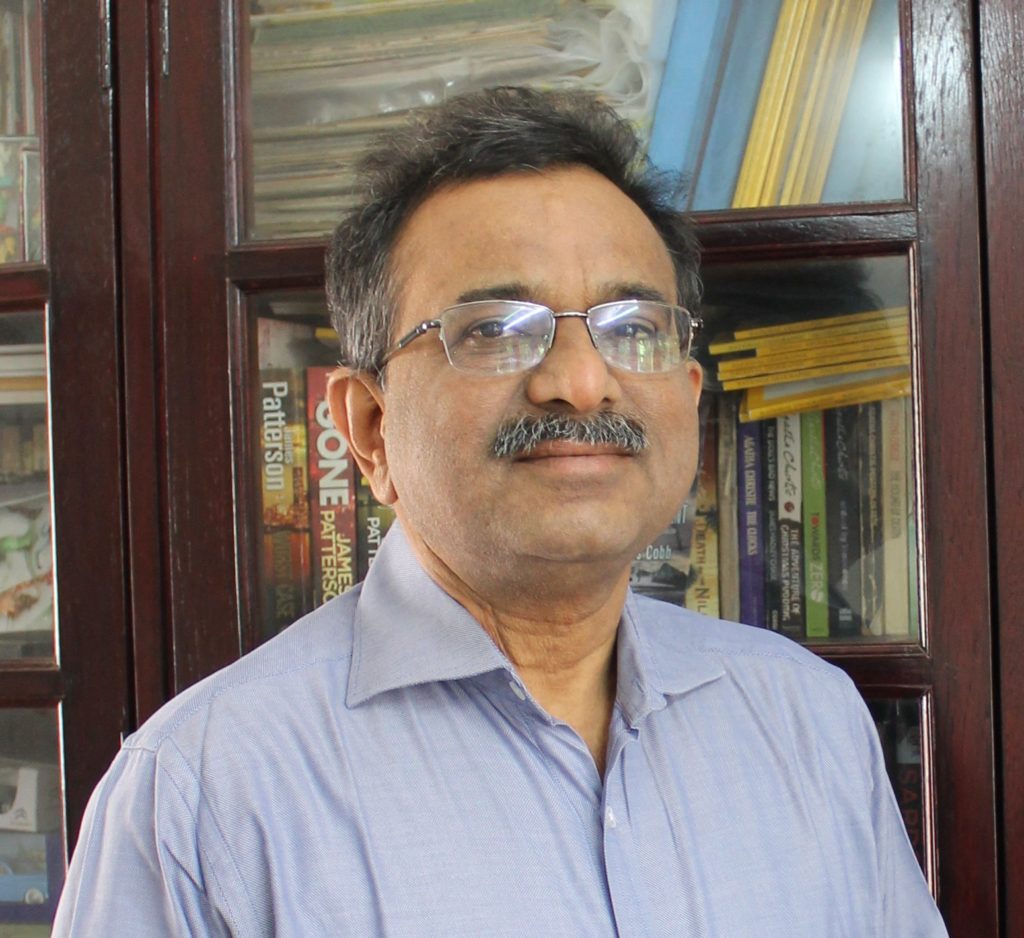
ALL PICTURES IN THIS BLOG EXCEPT A FEW TAKEN FROM INTERNET – THERE IS NO COMMERCIAL INTENT/USE & ACK WITH THANKS WHOEVER ARE THE AUTHORS OF THESE PICTURES
In January 2019 I wrote a 3-part blog on the end of term view of the Narendra Modi Govt. Those interested can read them here. I sincerely feel that a reading of the 2019 blogs will give a real flavor to the readers.
We are now in 2024 and so I share my views on the end of term of Modi 2.0 with the 2024 elections looming large. I first try to update the topics I spoke about 5 years back.
Defence:
Defence is a subject where decisions and actions initiated can easily take 15 years before one sees the impact of those. Modi 2.0 was unrelenting in its efforts to bolster the security of the nation and play catch up as fast as possible. Much has been done in the last 5 years even as events tested the armed forces of the nation. Some key points to recall, not in any order.
Women’s empowerment was demonstrated like never before with several firsts.

Group Captain Shaliza became the first lady to take command of a border combat unit of the Indian Air Force

Captain’s Shiva, Geetika and Fatima were deployed on the Siachen glacier, the world’s highest battleground.

Lt. Commander Prerna became the first lady commander of a Naval warship
- More than 25 women cadets joined the National Defence Academy, Khadakvasla the elite training school for the armed forces.
- Women entered the Artillery units of the Indian army – one of the toughest jobs on the battleground.
- Squadron Leader Manisha became the first Indian lady Aide-De-Camp to a Governor in Mizoram.
There were many more achievements apart from the women in uniform.
- The focus on self-reliance in defence production was given a huge impetus with more than 500 items including complex systems and ammunition being listed for local manufacture and supply.
- Both Defence production and exports saw a significant growth. Exports grew by 25 times in the last 10 years. No mean feat.
- For the first time ever, the government came up with an exclusive budget for local procurement amounting to more than 1.2 Billion Dollars (One Lakh Crores)
- The LCA Tejas and the locally made transport aircraft C-295 were inducted into the Indian Air Force.
- Several high value critical assets like Rafale jets for the Navy, High Altitude Long Range Remotely piloted aircraft, UAV’s, Sukhoi aircraft, Missiles of various kinds, Combat vehicles and such other were ordered. Trying to play catch up is very difficult but a focussed momentum was given.
- The first indigenous aircraft carrier was inducted into the Indian Navy.
In fact, the list of capital and development contracts across the 3 branches of the armed forces is so long that one will need a separate blog to just list them. This level of activity has likely never been seen in the history of India. While many projects were conceived much before 2014, where the Modi 1.0 and 2.0 Govts made a difference is that they brought each of the plans to the finish line, deliveries, commissioning with a ruthless mindset. Take for example the Tejas LCA. Started in 1984, the first flight was in 2001 and today not only has it been inducted but the 1st squadron was started in 2016 and the 2nd in 2020. Today the IAF has placed orders for 83 Tejas aircraft.
There were notable other developments though again the list is too long.
- A new recruitment system called Agneepath was started and like any fundamental change, this attracted its share of criticism and misgivings. Many seem valid while others seem fear mongering. But the fact is this is an idea which must be explored and the impact of its usefulness or otherwise would be known over the next 15 to 20 years. The key however would be that like all new ideas, mid-course real time corrections will need to be made.
- The entire armed forces are to be modernised with theatre commands, but this is early work in progress, affected by the untimely death of Gen Bipin Rawat. This is a long overdue and essential reform which would take years to settle and function like a cohesive system.
- A monolithic unwieldy Ordnance factory board has been reshaped into multiple corporate defence units. One of the most brilliant decisions, this can catalyse technology development, production, and bring down the lead times from concept to commissioning. A nation can ill afford brilliant minds taking 30 to 40 years working on just one project even as the world around them changes only to find the experienced minds dead and retired, the changes making their development redundant and instead of motivating them, get depressed.
- Technology has been leveraged to connect with the industry, and the Govt has shown courage to make changes that were in the past considered sacrilege. Like co-opting the private sector as a trusted partner. As much as 25% of the R&D budget was earmarked for start-ups and private sector partnerships. A whopping 194 tech start-ups, 393 small and medium innovators are working on 270 projects, 1,640 IP’s have been issued.
- The focus on manufacturing locally has resulted in defence manufacturing corridors being established in Tamil Nadu and Uttar Pradesh.
- The military spending has gone up by a whopping 33% in the last decade.
- The medium term spend is 130 Billion USD and the 10 year pipeline is 223 Billion USD.
- FDI in defence was increased to 74% from 49% earlier.
As mentioned, the list is too long since the Govt has set a scorching pace in the last 5 years and the difference is in intent, policy and strategy implementation, with a holistic planning. The biggest takeaway has been the total lack of any kind of defence scams. The ghost of Bofors that hung like an albatross around the Indian neck has been finally removed and buried.
Defence sector is undoubtedly one of the most reformed and successful segments of the Indian economy between Modi 1.0 and 2.0. The key to this success is the brilliant, quiet, and calm leadership provided by the Late Manohar Parrikar and in the last 5 years by Rajnath Singh.
Finally, as an internal security success, a 10-year track record of no terrorist incidents across the country, except in the border areas, and even there, a sharp reduction seen is surely something that Modi 2.0 can rightfully be proud of.
Diplomacy:
Foreign policy continued to grow and create waves. India continued to ignore Pakistan and without that distraction was able to focus on so many other things that the old eco-system has been tying itself into knots with no relief in sight. The “Kashmir can go to hell” comment by Farooq Abdullah sums it up totally. The old is dead and buried and the new is an animal that not just India’s opposition but even the global west finds disconcerting.
The reason for this discomfort is simple. For 70 years the nation prided itself on riding on the coat tails of the Mahatma without reinventing his philosophy. They felt that blindly following that will make the world change. India looked for validation and confirmation from the west by sacrifice if need be. The lesson of Jesus to turn the other cheek was followed.
Today India stands up to its self-interest, negotiates from a position of strength, articulates its self-interest in very clear, no-nonsense terms. The world has taken time to understand this but has grudgingly started to realise this change. It is yet to accept this change, but they have no option.
Talking of Modi and his Gujarat days, I had said that his success was not in making Gujarat a great state, but in making the state jump orbits to begin a journey of Great to Greater and Greatest. Likewise with India, we had low expectations, stayed in a lower orbit, glorified poverty, dreamt small, and what Modi 1.0 did was to prime the foreign policy, so that in Modi 2.0, India jumped orbits, dreamt big by creating an aspirational society, that had a force multiplier effect thanks to the Indian diaspora globally. The results will take time to show up, but they will. Remember, in the diplomatic world there are no friends, just interests. Those protecting their interest and demonstrating realpolitik are the ones who earn respect.
Digital:
Call it luck if you will, but if this digital revolution had not been kick started by Modi 1.0 and then jumped orbits in Modi 2.0, India would have been dragged into the stone age during Covid. That every one of us seamlessly moved to global online meetings 24 x 7, did all shopping, donating, helping, communicating, online was nothing short of a miracle. Just imagine if we could not continue to work like before, but from home, the nation would have come to a shuddering halt. Even manufacturing activities continued uninterrupted across the nation – with offline meetings and everybody working from home. Anybody in distress could be sent money in a second and every activity documented with pictures and shared instantly. The online systems did not collapse.
The kind of assistance and help that every Govt and even individuals could extend to others in distress, thanks to the digitally connected India, was humungous. There are enough stories to write a book. In my own case as a volunteer in the early days of Covid I could help a lady who had to get critical cancer medicines delivered to her 25-year-old brother living 150 kms away in a small town. A distress call received by early evening, search for volunteers who could drive to the town overnight, the social media message was amplified across India by a Minister and MP, seen by a biker in Bangalore who contacted me, police pass arranged and by late night, within about 4 hrs after the distress call, the biker was on his way and delivered the critical medicines. I still don’t know any of the folks involved in this whole chain, but Digital India helped save countless lives.
UPI processed 8.7 Billion transactions in March’23 valued at 14 Trillion INR (170 Billion USD) and even advanced western nations haven’t been able to match this kind of pace in digital transformation. That a highly respected mind like Chidambaram mocked this whole idea was literally karma biting him back. However, there are always risks in every story. The raison-de-atre of the Modi government has been promoting and using technology as a game changer. If at one level satellite mapping and apps were used to monitor the progress of projects the other was once again pulling Aadhar to the next orbit.
Subsidy, a.k.a Freebies:
Like debates on dynastic politics and nepotism, the intellectual class as usual miss the woods for the trees. It is never anybody’s case that there must be no subsidy or freebie. The issue is a targeted freebie. There will always be some element of political freebies, but where the Modi Govt has scored is that majority of the freebies are targeted with a clear end goal. No freebies are announced as a free for all where even a multi billionaires become eligible for the same. Never mind that in reality most are made ineligible. But this message, even politically is self-defeating. What happens is that those who actively support the party get the benefits, those who need it don’t and much money is diverted to party supporters. The Modi Govt does not deny the really deserving and the target in a majority of cases is about teaching people to fish and not being fed the fish.
This is where the Modi Govt has performed significantly differently from the old eco system. Critics don’t understand or if they do are loath to accept it.

Author: Ravindra Vasisht
Twitter: @rvasisht
Article republished with permission from Author
Original Source:
Modi Govt end of term 2019 view – Part 1 (rvasisht.blogspot.com)










